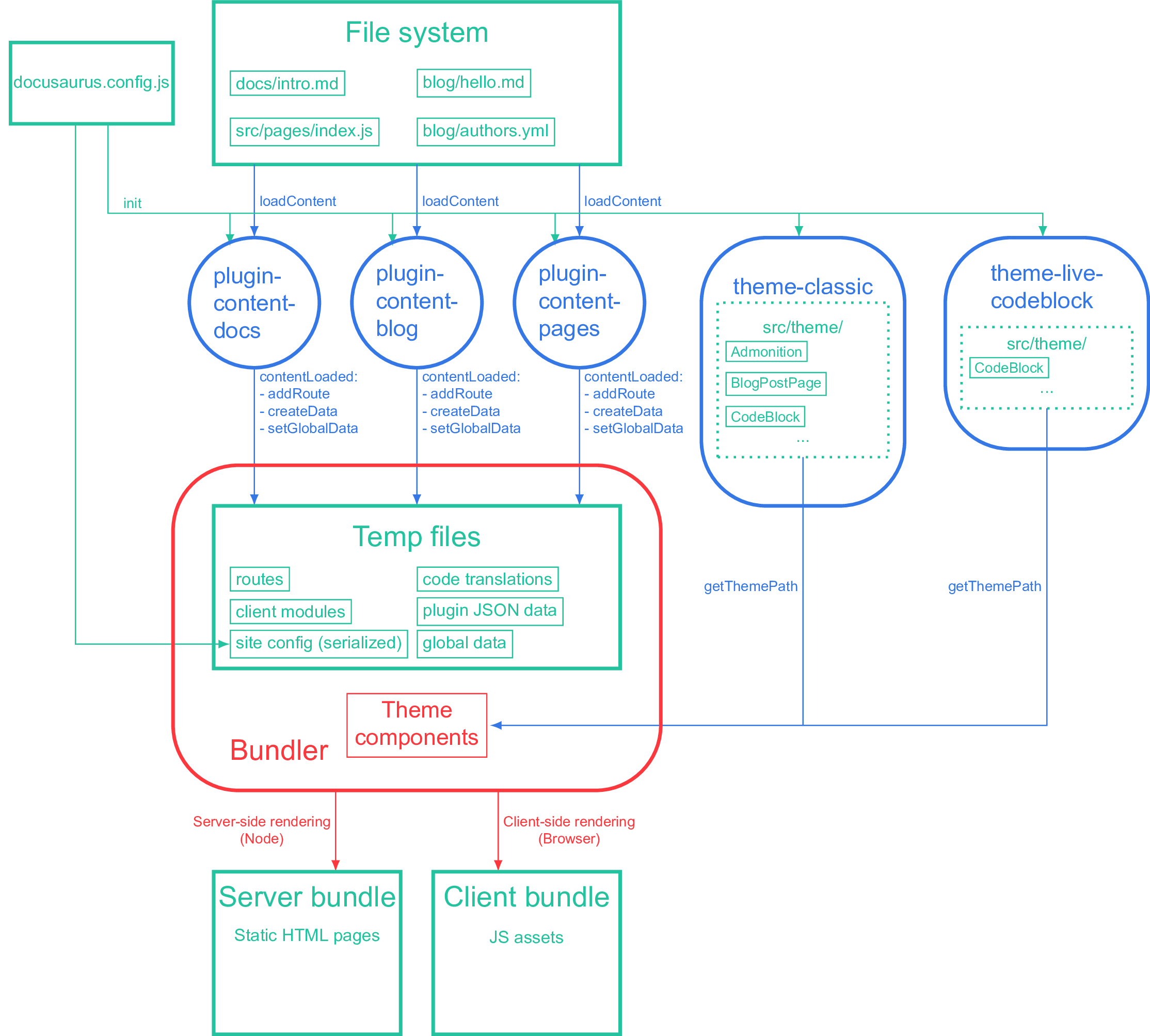架构

这个图表展示了 Docusaurus 是如何构建你的网站的。 每个插件会收集各自的内容并输出 JSON 数据;主题会提供组件,这些组件会以路由模块的形式接收插件输出的 JSON 数据。 打包器会把所有的组件打包,并输出一个服务端包和一个客户端包。
虽然你(要么是插件作者要么是网站创建者)一直在写 JavaScript ,但要牢记,写出的 JS 实际上是在不同的环境中运行的:
- 所有插件生命周期方法都在 Node 中运行。 Therefore, until we support ES Modules in our codebase, plugin source code must be provided as ES modules that can be imported, or CommonJS that can be
require'd. - 主题的代码由 Webpack 构建。 它们可以按照 React 的惯例,以 ES 模块形式发布。
Plugin code and theme code never directly import each other: they only communicate through protocols (in our case, through JSON temp files and calls to addRoute). 一个好用的心智模型是:想象插件不是用 JavaScript 写的,而是用其他诸如 Rust 之类的语言。 The only way to interact with plugins for the user is through docusaurus.config.js, which itself is run in Node (hence you can use require and pass callbacks as plugin options).
During bundling, the config file itself is serialized and bundled, allowing the theme to access config options like themeConfig or baseUrl through useDocusaurusContext(). However, the siteConfig object only contains serializable values (values that are preserved after JSON.stringify()). 函数、正则表达式等会在客户端丢失。 The themeConfig is designed to be entirely serializable.